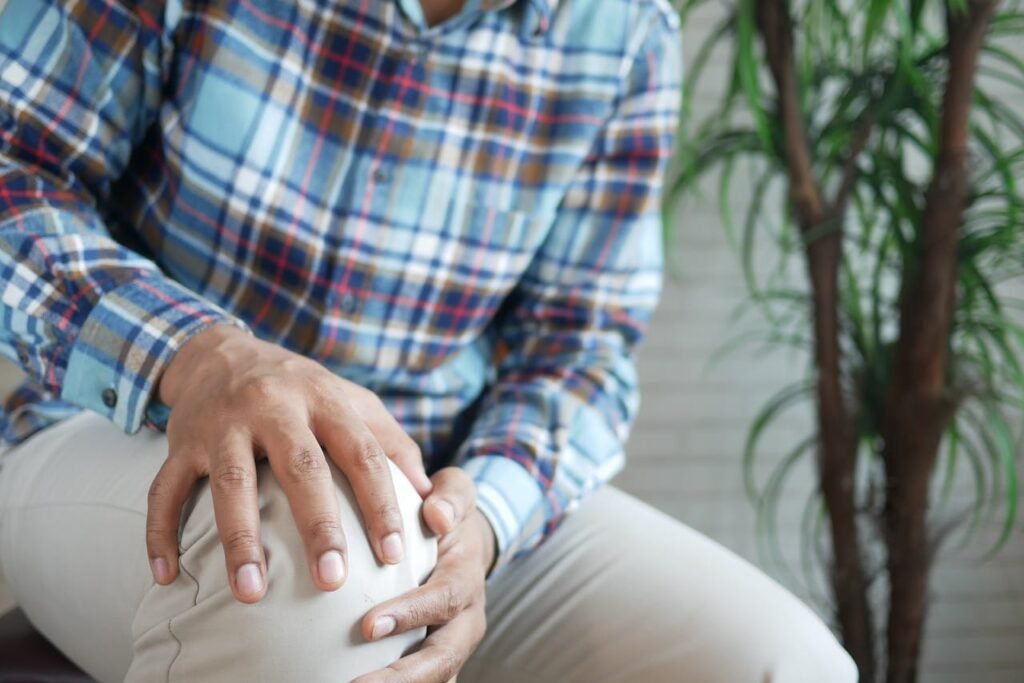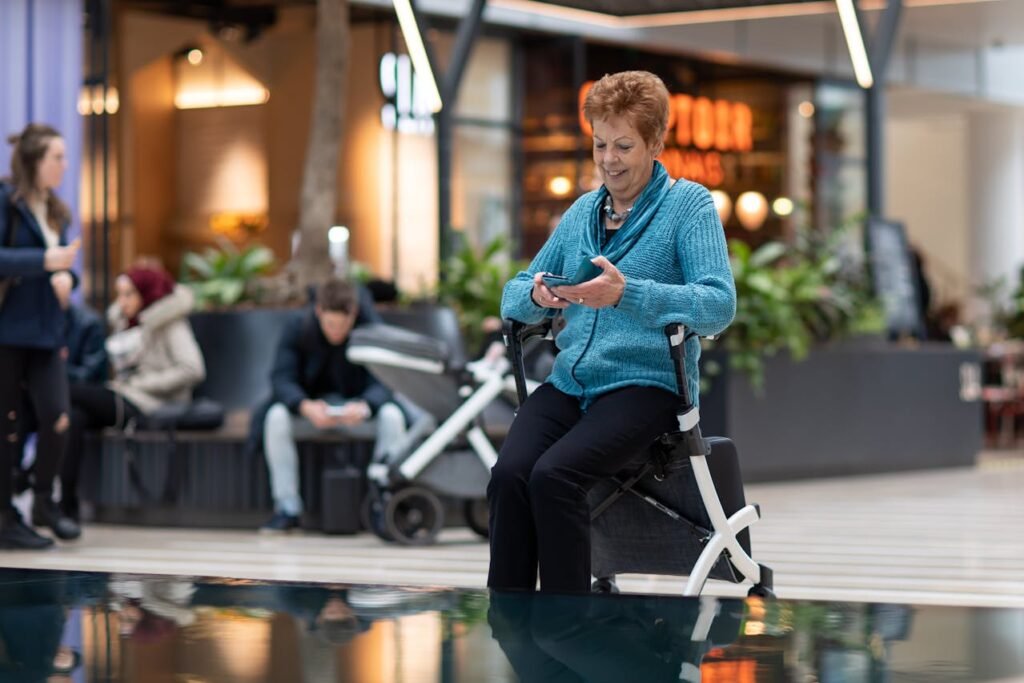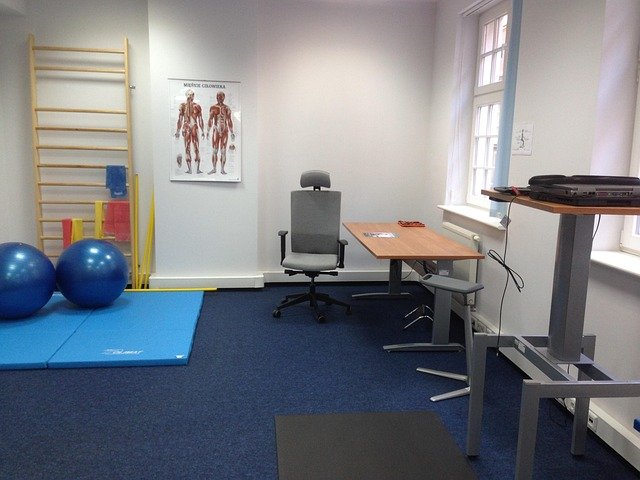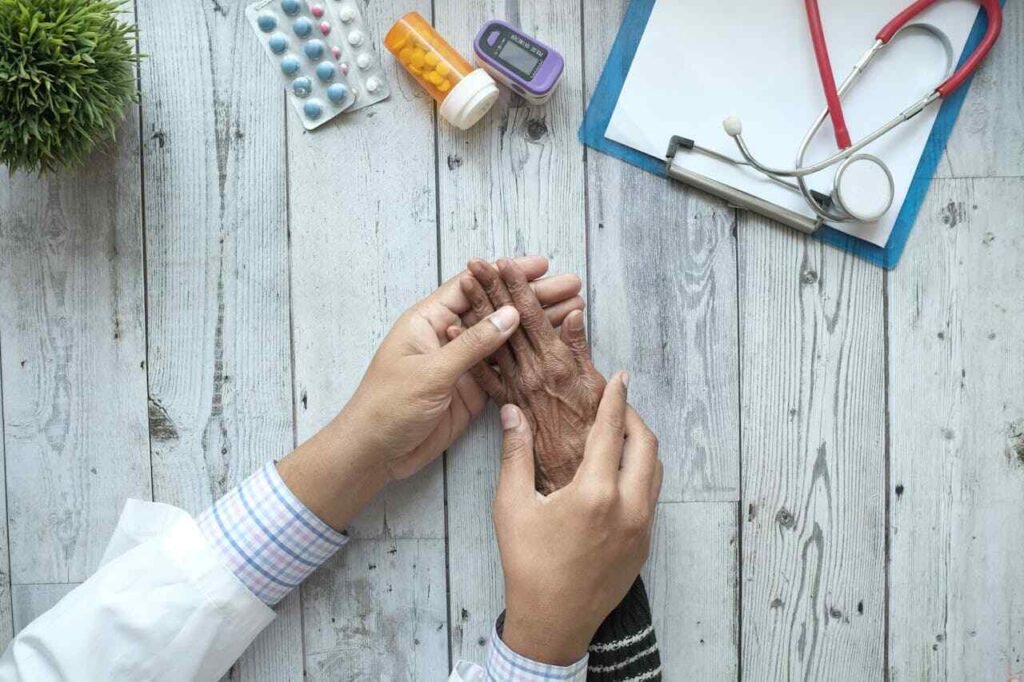Moving your body should never feel painful or scary, especially as you grow older. But for many seniors using prosthetic limbs, arthritis can make even simple movements feel stiff or sore. When joints ache and muscles tighten, walking, bending, or reaching can take extra effort—and that can slowly take away your confidence to move.
At RoboBionics, we believe movement should bring comfort, not pain. Over the years, we’ve worked with hundreds of senior prosthetic users across India who live with arthritis. What we’ve learned is simple: gentle motion, done the right way, doesn’t just ease stiffness—it helps restore freedom, balance, and peace of mind.
This article is your complete guide to gentle mobility drills made specifically for seniors with prosthetics and arthritis. Each movement is simple, safe, and can be done at home. You’ll learn how to warm up stiff joints, strengthen weak muscles, and keep your prosthesis working in harmony with your body—all while reducing pain and building confidence.
Understanding Arthritis and Movement Challenges
What Happens When Arthritis Meets Prosthetics

Arthritis is more than just joint pain—it’s the body’s way of telling you that the protective tissue between your bones has worn thin. This causes stiffness, swelling, and discomfort. For seniors using prosthetic limbs, arthritis can make daily movement harder, especially if it affects the joints that work with the prosthesis.
For example, if you use a prosthetic leg, arthritis in your hip or knee can limit your stride and make walking uneven. If you use a prosthetic arm, shoulder or elbow pain can make lifting or gripping tiring.
These limitations are frustrating, but they don’t have to control your life. Gentle, consistent mobility drills can keep your joints moving and your prosthesis functioning smoothly.
How Arthritis Affects Balance and Confidence
When your joints feel stiff or painful, your natural reaction is to move less. Over time, this leads to muscle weakness, which makes balance harder. For prosthetic users, this loss of confidence can build quickly.
You might hesitate to stand, walk, or even shift your weight, fearing discomfort or instability. But movement—especially gentle, guided movement—helps maintain muscle support around your joints. That support eases pressure and restores control.
It’s not about pushing harder. It’s about moving smarter. Small, mindful actions go a long way toward keeping you stable and strong.
The Role of Mindset in Mobility
Many seniors believe pain means they should stop moving, but the opposite is often true. Lack of movement can make arthritis worse by causing joints to stiffen further.
Gentle motion, performed regularly, nourishes your joints with fluid and warmth. It also tells your brain that your body is safe to move. That simple reassurance brings calm, control, and a stronger connection to your prosthesis.
With patience, your body begins to trust movement again, and what once felt heavy or painful starts to feel natural.
Preparing for Gentle Mobility
Creating a Safe Environment
Before starting any exercise, make sure your space is ready. Choose a calm, open area where you won’t be interrupted. A sturdy chair or wall nearby provides support if needed.
Avoid rugs that slip or uneven flooring. Good lighting helps you see where you’re stepping or placing your prosthesis. Keep your phone or water nearby so you won’t have to rush if you need them.
Safety and comfort come first. When you feel secure, your movements will naturally become smoother and more relaxed.
What to Wear and When to Move
Wear soft, stretchable clothes that allow easy movement. Tight or heavy fabrics can restrict flexibility, while light, breathable clothes help your muscles stay warm.
Choose a time of day when your joints feel least stiff. For most seniors, that’s mid-morning or early afternoon, after the body has loosened up. Avoid exercising during cold hours unless you’ve warmed up properly.
If your prosthesis feels heavy or misaligned, adjust it before you start. Proper fit prevents strain and ensures your practice feels safe.
Gentle Warm-Up for Achy Joints
A warm-up prepares your muscles and joints for movement. It improves blood flow, eases tension, and helps you avoid pain or injury.
Begin by sitting comfortably and taking slow, deep breaths. Inhale through your nose for three counts, hold for one, and exhale through your mouth. Do this five times to relax your body.
Next, slowly roll your shoulders back and forth, move your wrists in circles, and gently stretch your fingers. For the lower body, point and flex your toes, then move your ankles in small circles.
These little motions wake up your joints and signal your body that it’s time to move.
Listening to Your Body
The golden rule of gentle exercise is simple: move until you feel relief, not pain. Your goal is comfort and control, not endurance.
If you feel sharp pain, stop immediately. But if you feel mild stiffness easing as you move, continue at that pace. Over time, your body will show you its natural limits.
Always move in your comfort zone. Respect what your body tells you, and you’ll make steady progress without strain.
Gentle Upper-Body Mobility Drills
Shoulder Rolls and Circles
Sit tall with your feet flat on the floor. Slowly lift your shoulders toward your ears, roll them backward, and then drop them down. Repeat this a few times, then reverse the direction.
These slow, circular motions release tension from your upper back and shoulders. For prosthetic arm users, it helps maintain smooth joint movement and prevents stiffness in the shoulder socket.
Remember to breathe with each roll—steady and slow.
Elbow Bends for Flexibility
If your arthritis affects your elbows or arms, this drill can help ease stiffness. Sit comfortably and place your arm by your side. Slowly bend your elbow, bringing your hand toward your shoulder, then lower it.
If you use a prosthetic arm, perform the movement within your comfort range, focusing on maintaining smooth control.
Gentle elbow bending lubricates the joint and keeps your upper limb flexible. Over time, this small movement supports tasks like reaching and lifting.
Wrist Rotations and Finger Flexing
Your wrists and fingers work constantly, whether you’re holding something or simply balancing with your prosthesis. Arthritis often causes stiffness in these small joints, but light motion keeps them supple.
Make slow wrist circles, then open and close your hands gently several times. If your prosthesis includes mechanical or myoelectric fingers, simulate opening and closing motions to engage those muscles naturally.
These actions improve blood flow and coordination, which makes daily activities like eating, writing, or dressing feel easier.
Gentle Arm Lifts
Extend your arm forward and raise it to shoulder height, then lower it slowly. If that feels easy, lift slightly above the shoulder. Move slowly to avoid straining the joint.
This strengthens your shoulder muscles and maintains range of motion. If you feel tightness, reduce the height or pause briefly before continuing.
Smooth and patient movements bring better results than forced ones.
Lower-Body Mobility for Comfort and Strength
Seated Knee Lifts

Sit in a sturdy chair with your back straight. Lift one knee slowly toward your chest, then lower it. Switch legs and repeat.
This exercise strengthens your thigh muscles and supports the hip joint, which is especially useful for prosthetic leg users. It also keeps circulation flowing through your legs.
Lift only as high as feels comfortable. Even small movements, done consistently, will ease stiffness and improve coordination.
Ankle Circles
Your ankles play a quiet but vital role in stability. If they become stiff, your balance can suffer.
While seated, lift one foot slightly off the ground and move your ankle in gentle circles—first clockwise, then counterclockwise. Switch legs and repeat.
If you wear a prosthetic leg, focus on the natural ankle or on mirroring the movement for symmetry. Regular ankle mobility supports smoother walking and standing transitions.
Hip Rotations
Sit tall with your feet flat. Gently lift one leg and move your thigh outward in a slow circular motion. If that’s too difficult, imagine the motion without actually lifting—just guide your hip to move slightly.
Hips often hold tension when arthritis sets in. Keeping them loose helps with balance, sitting posture, and gait.
Don’t rush this movement. Let the joint open gradually, allowing warmth and flexibility to build with each repetition.
Calf Tightness Relief
Calf muscles can become tight after long sitting or standing periods. To ease this, place your heel on the ground and gently pull your toes upward. Hold for a few seconds, then relax.
This stretch reduces lower leg stiffness and supports healthy blood flow. For prosthetic users, flexible calf muscles improve alignment and make walking feel smoother.
Balance and Coordination Drills
Gentle Seated Weight Shifts
Balance starts with awareness. Even while sitting, you can teach your body how to distribute weight evenly between both sides.
Sit upright on a firm chair with your feet flat on the floor. Slowly shift your weight to one side, keeping your hips grounded, then return to the center. Repeat on the other side.
If you use a prosthetic leg, focus on feeling the shift evenly through both hips. Imagine grounding both feet equally into the floor. This exercise reconnects your body with your prosthesis and improves balance control without strain.
Controlled Standing Practice
When arthritis affects your knees or hips, standing can feel heavy. This simple drill helps rebuild stability safely.
Sit on the edge of your chair, place both feet under your knees, and lean slightly forward. Engage your thigh muscles as you slowly stand up using minimal support from your arms.
Pause for a moment, then lower yourself back down with control. If needed, hold onto a sturdy table or walker for balance.
This movement strengthens the muscles that support your prosthesis and helps you stand and sit safely in daily life.
Gentle Side Steps for Coordination
If you feel confident standing with support, try adding small side movements. Hold onto a stable surface such as a countertop or back of a chair. Take a slow step to one side with your sound leg, then bring your prosthetic leg to meet it.
Move only a few inches at a time. These tiny side steps improve coordination, hip mobility, and strength. They also train your body to handle uneven surfaces better.
If arthritis makes your hips stiff, keep the movements light. The goal is rhythm, not range.
Seated Arm Reaches for Balance Control
Sit comfortably with your feet planted. Extend one arm in front of you and reach forward slowly. Then return to the starting position and switch sides.
This movement engages your core muscles—the deep stabilizers that keep you steady. For prosthetic arm users, it also builds gentle coordination without stressing the shoulders.
A strong core reduces falls and makes all movement—from walking to standing—more secure.
Daily Mobility Routine for Arthritic Prosthetic Users
Morning Joint Awakening Routine
Mornings can be the toughest time for seniors with arthritis. Your joints feel stiff, and your prosthesis may feel heavier than usual. That’s why a simple wake-up routine helps.
Begin with deep breathing, followed by gentle neck and shoulder rolls. Next, flex and extend your knees a few times while seated. Rotate your ankles and open and close your hands.
These few minutes prepare your body for the day. It’s like warming the engine before a drive—slowly and gently.
After your morning routine, you’ll notice improved comfort in your prosthesis and smoother motion throughout the day.
Midday Energy Booster
After sitting for a while, your joints may start to stiffen again. Midday mobility helps prevent that.
Take a short break from your chair. Do some seated marching or light weight shifts. You can even stand briefly, holding onto a surface, and stretch your hips or shoulders.
Movement brings blood back to your joints and relieves swelling. These short sessions keep stiffness from building up and maintain energy.
Even a five-minute routine can refresh your whole body.
Evening Relaxation Movements
Evening drills should be soothing rather than strenuous. Focus on stretches that calm your joints before rest.
Sit comfortably, roll your shoulders, and gently twist your upper body side to side. Stretch your legs forward, flex your toes toward you, and breathe deeply.
This helps relax tired joints and reduces nighttime discomfort. For prosthetic users, it also prevents tension from building up where the socket meets the skin.
A calm body rests better and wakes up stronger.
Weekly Practice Plan
To see real improvement, aim for short, consistent sessions instead of long, tiring ones. Three or four times a week, do your full mobility routine—warming up, joint movements, and relaxation.
On other days, keep it light with breathing and gentle stretches. Consistency helps your joints adapt gradually and keeps arthritis pain under control.
Each small session builds momentum toward better mobility.
Managing Pain Through Movement
Understanding Good and Bad Pain

Not all pain is the same. Gentle soreness or warmth after movement often means your muscles are waking up. Sharp or deep joint pain, however, signals that you’ve pushed too far.
Learn to recognize these differences. If the discomfort fades after exercise, that’s good pain—it means your joints are loosening. If it increases afterward, rest and apply mild heat to soothe the area.
For prosthetic users, pain near the socket or limb should always be checked. Sometimes, a small alignment issue can cause unnecessary strain. Adjusting your prosthesis can often ease the problem quickly.
Using Heat and Cold Wisely
Warmth relaxes muscles and increases blood flow, making joints easier to move. You can use a warm towel or heating pad for ten minutes before starting your drills.
Cold helps reduce swelling or inflammation after exercise. Apply a cold pack wrapped in cloth for five to ten minutes if you feel joint soreness.
Alternate between heat and cold depending on how your body feels. Both methods support safe, pain-free movement when used carefully.
Breathing to Control Pain
Deep breathing is a simple yet powerful way to manage discomfort. It helps calm your nervous system, lowers stress, and relaxes tense muscles.
During each exercise, inhale slowly through your nose and exhale through your mouth. If a joint feels tight, take an extra breath before moving further.
Breathing mindfully teaches your body that it’s safe to move, even with arthritis. This mental reassurance reduces pain sensitivity over time.
The Role of Rest Days
Rest is not laziness—it’s part of healing. When you rest, your joints absorb nutrients, and your muscles repair themselves.
Take at least one rest day between intensive sessions. On these days, focus on relaxation, light stretching, or even slow breathing while sitting.
If your prosthesis feels sore after long use, remove it for short intervals to let your skin and muscles recover.
Balance movement and rest like partners. Together, they keep your progress steady and safe.
Long-Term Joint Care and Strength Maintenance
Building Strength Gradually

Arthritis doesn’t disappear overnight, and neither does joint stiffness. But with steady effort, your body adapts.
Start with small repetitions and increase only when it feels comfortable. Gentle strengthening improves your endurance and makes prosthetic use easier.
Remember, consistency brings change, not force. A few minutes of careful movement each day is far more effective than one intense workout a week.
Strength built slowly lasts longer and feels better.
Supporting Joints with Nutrition
Healthy joints need the right fuel. Foods rich in omega-3 fatty acids, such as flaxseeds, walnuts, and fish, reduce inflammation. Fruits, vegetables, and plenty of water help keep your body hydrated and flexible.
Avoid too much sugar or processed food—they can increase stiffness. Instead, choose simple, home-cooked meals that nourish your body naturally.
What you eat supports how your joints feel, just as movement supports how they work.
The Importance of Professional Support
Your prosthetist and physiotherapist are your partners in mobility. Regular checkups ensure your prosthesis fits properly and doesn’t add stress to your joints.
Physiotherapists can also tailor specific drills for your needs, especially if arthritis affects multiple areas. They can help adjust your technique to minimize pain while maximizing movement.
Never hesitate to ask for help. A few minutes of professional advice can save you weeks of discomfort.
Staying Emotionally Strong
Living with arthritis and a prosthesis requires patience and resilience. Some days may feel slow, others empowering. Accept both as part of the journey.
Celebrate small victories—lifting your arm higher, standing more comfortably, or finishing your routine without pain. These moments matter more than perfection.
Emotional strength supports physical progress. When your mind feels hopeful, your body responds with energy and courage.
Living with Comfort and Confidence
Creating Movement Habits for Life
Once your drills become part of your daily rhythm, they stop feeling like exercise and start feeling like freedom. You’ll notice smoother motion, less morning stiffness, and a lighter step with your prosthesis.
Make movement a quiet ritual—something that belongs to you alone. It’s not about how far or fast you go, but about how good your body feels afterward.
Over time, these gentle moments of motion create a body that trusts itself again.
Finding Joy in Everyday Activities
Simple actions—pouring tea, folding clothes, or walking to the garden—become easier when your joints are mobile. Each pain-free moment adds confidence and joy to your day.
When you move with ease, you don’t just feel better physically; you reconnect with life around you. That is the real reward of gentle mobility.
How RoboBionics Supports Your Journey
At RoboBionics, we believe independence is built through movement and care. Our prosthetic designs are created to support your comfort, stability, and freedom—even if arthritis is part of your life.
From our Grippy™ Bionic Hand to our lightweight lower-limb prosthetics, every product is engineered for everyday comfort and precise motion. We also work closely with rehabilitation experts across India to ensure seniors receive the guidance they need to move confidently again.
If you or someone you love is ready to rediscover freedom through gentle mobility, we invite you to book a personalized demo at robobionics.in/bookdemo.
Movement can feel gentle again—and with the right support, every day can feel lighter, stronger, and more joyful.



